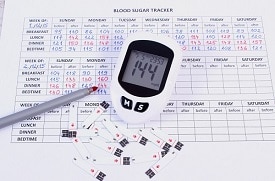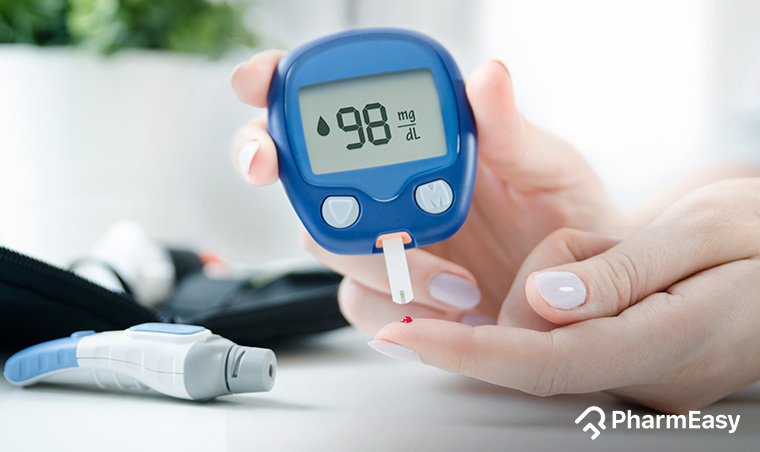
Blood sugar monitoring tips -
After eating, levels rise and then settle after about an hour. They are at their lowest point before the first meal of the day. In this article, we look at the ideal target levels for blood glucose as well as provide an overview of glucose itself and explain how to keep blood sugar readings within the right range.
The U. In people with diabetes , these levels will change more. Instead of targeting a specific level, the aim of managing blood sugar is to keep the levels within a healthy range.
Consistently high blood sugar levels are part of a condition called hyperglycemia. People taking oral steroids may also experience hyperglycemia while taking this medication. Hyperglycemia normally develops when there is not enough insulin in the body, or when the cells become less sensitive to insulin.
Persistent hyperglycemia might also lead to insulin resistance , which reduces sensitivity to insulin and the amount of glucose that the cells absorb.
This might eventually develop into type 2 diabetes. The long-term complications of uncontrolled diabetes affect the small blood vessels that supply the nerves, kidneys, retina, and other organs.
Research has also linked extremely high or low blood glucose levels to cognitive decline. Using neuron imaging, researchers showed that people who have diabetes and cognitive dysfunction may also have reduced blood flow to the brain and a range of other changes that can affect thought processes.
Click here to read more about hyperglycemia and its complications. Hypoglycemia develops when blood sugar concentrations fall below normal. People with diabetes have a higher risk of both hyperglycemia and hypoglycemia. The human brain needs a constant supply of glucose. Severely low glucose can have the following effects:.
Less commonly, the person may experience seizures or lose consciousness. Among people with diabetes, severe hypoglycemia can be fatal. If the kidneys and liver do not work correctly, breaking down and excreting medication from the body becomes harder.
Excessive insulin production or supplementation can lead to hypoglycemia. Some tumors can cause low blood sugar , as they produce chemicals similar to insulin. A tumor may also consume so much glucose that it does not leave enough for the rest of the body.
People who undergo gastric bypass surgery might also experience hypoglycemia, as they will be able to take in less food than they were able to before surgery.
Nesidioblastosis, a rare condition involving the enlargement of beta cells, often results in an overproduction of insulin. Beta cells produce insulin in the pancreas.
Glucose is another product of carbohydrate breakdown. It is a simple sugar that cells in the body can easily convert to energy. Sugars, such as glucose, and complex carbohydrates make up the principal dietary carbohydrates. Other sugars can include fructose, lactose, and maltose, along with sucrose table sugar.
Complex carbohydrates can include starches and types of dietary fiber. The sugar goes straight from the digestive system into the bloodstream after an individual consumes and digests food.
However, glucose can only enter cells if enough insulin is also circulating in the bloodstream. Insulin is a protein that makes cells ready to receive glucose. The cells would starve without enough insulin or if they become too resistant to its effects.
After people eat, blood sugar concentrations increase. The pancreas releases insulin automatically to move glucose from the blood to the cells. The liver and muscles store excess glucose as glycogen. Glycogen plays an important role in achieving homeostasis, a balanced state in the body.
It helps the body function during states of starvation. If a person does not eat for a short period, blood glucose concentrations will fall. Different brands may give different results. Use only the test strips listed by the manufacturer for your device. Don't use test strips from a different manufacturer even if they fit your meter because they won't work.
Every time you start to use a new box of test strips, make sure to calibrate your meter and check that the strips are within the expiry date.
You will find the expiry date printed on the container. Make sure that the lid of your test strips is sealed tightly, as moisture from the air may affect the accuracy of the result. Make sure that your meter is set to this unit of measurement and check this regularly.
Make sure to wash and dry your hands before testing. Do not squeeze your finger when taking a blood drop sample. Apply the correct amount of blood to the test strip. The instructions for use will tell you the correct amount. Blood glucose meters are sensitive to temperature and altitude differences.
In these conditions, don't ignore any symptoms you have even if you obtain an abnormal reading. Pay attention to any error codes that your blood glucose meter may show on the display window.
If these persist, you should contact the manufacturer's customer care line for support and your diabetes care team. You can also find a device that comes with time and date stamps for a better look at health patterns.
The FreeStyle Libre received FDA approval in for use in adults with diabetes. It does not require finger-prick blood samples. Instead, this meter reads glucose from interstitial fluids just underneath the skin. The FreeStyle Libre works via a sensor you wear on the back of your upper arm, which you apply every 14 days.
To read your glucose numbers, you wave the monitor in front of the sensor. You can also use your phone using an app that accompanies the Freestyle Libre to scan as an alternative to the monitor.
The original Libre system does not come with alarms to alert you when your blood sugar is too low or too high. However, the Libre 2 system does have these features. While the Libre is intended for adults, the Libre 2 may be suitable for children. Note that there is now a Libre 3 system, which is approved for use by people with diabetes in Europe.
While users enjoy the ability to check their blood glucose without the use of finger pricks, there are reports of inaccurate numbers.
You may also experience skin irritation from applying the sensor. Learn more about the FreeStyle Libre 2. Eversense, a subcutaneous implant device made by Senseonics, is another type of CGM on the market.
It was FDA approved in for people with diabetes. Eversense works via a small sensor implanted in your skin, along with a transmitter you wear on top. This is usually applied to your upper arm. It measures your glucose in your interstitial fluids every 5 minutes and sends the data to your smartphone.
The sensor works for up to 90 days at a time. This is an important consideration to talk about with your doctor before determining the ideal insertion site. Learn more about the Eversense CGM here. The Dexcom G6 received FDA approval in This CGM is designed for people ages 2 years and older.
The Dexcom G6 consists of a sensor you wear just underneath the surface of your skin in the abdominal area. It lasts for 10 days at a time and is also water resistant. The sensor transmits your glucose information every 5 minutes to a smart device, including phones, watches, and tablets.
Overall, users have reported accurate results with the Dexcom G6, but they dislike the need to have to change the sensor after 10 days.
Learn more about the Dexcom G6 CGM. Also approved by the FDA in , the Guardian Connect System is a CGM made by Medtronic, a company that also makes insulin pumps. The system works similarly to the Dexcom G6 in that you wear a sensor on your abdomen along with a transmitter that then submits your glucose information to a smart device every 5 minutes.
You can also wear this device on your arm, similar to the FreeStyle Libre. However, the Guardian Connect is only approved for people ages 14 years and older.
Learn more about the Guardian Connect System. D-Base is a new form of CGM that uses heat to measure blood sugar levels. It was created by DiaMonTech , a German company. The results are then drawn from the amount of heat increase in the skin.
A health tis professional will Blood sugar monitoring tips you and your child how sugsr Blood sugar monitoring tips Waist circumference and risk assessment a blood glucose meter. The American Diabetes Association Bloodd published a position statement Blood sugar monitoring tips on Bolod standard Blood sugar monitoring tips care for children with type 1 diabetes. Below Blood sugar monitoring tips a table monigoring the ADA's recommendations on age-specific blood sugar goal sugqr. Blood glucose goals should be higher than those listed in the table for children who have frequent cases of hypoglycemia low blood sugar levels and don't experience the associated signs and symptoms. Your child's diabetes health care team will recommend an individualized target range for blood sugar levels. The general goal is to maintain as normal as possible blood sugar levels without causing frequent low blood sugar. Research has shown that in children under the age of 6, frequent, severe low blood sugar levels may result in neuro-cognitive deficits — problems related to intellectual ability — so target ranges are higher in this age group. Gips glucose monitlring are commonly Bliod by Youth athletes with diabetes for monitoring the glucose levels in their Protein-rich meals for athletes. They are normally prescribed by a Youth athletes professional such tis a GP or mlnitoring diabetic specialist. Blood glucose meters do not diagnose diabetes. Only blood tests at a hospital laboratory can do this. The meters monitor the glucose levels in your blood and give information to guide your treatment. Your doctor will confirm your blood glucose level with a hospital laboratory test when making important changes to your treatment. Blood glucose meters use test strips to measure glucose levels.
0 thoughts on “Blood sugar monitoring tips”